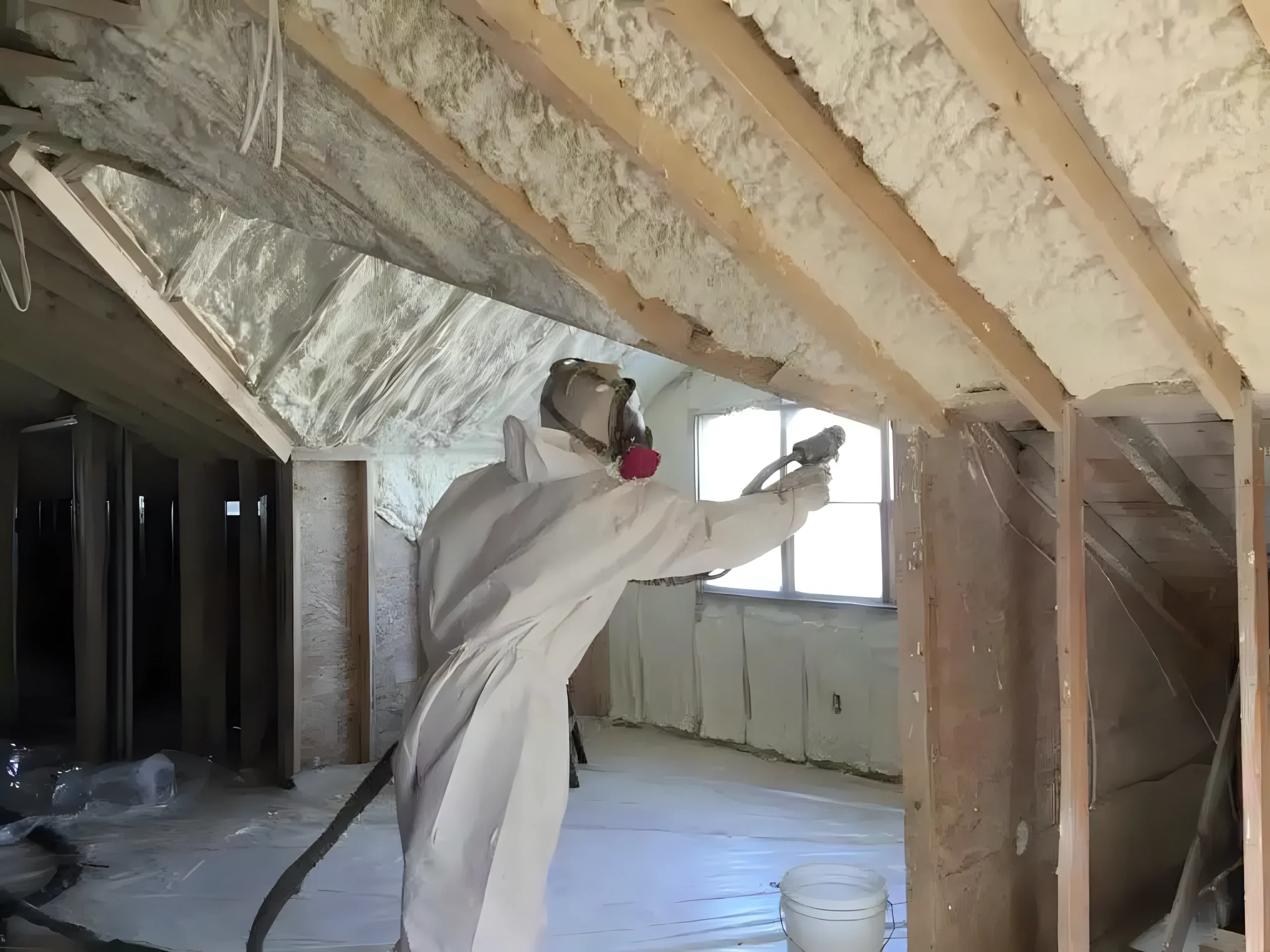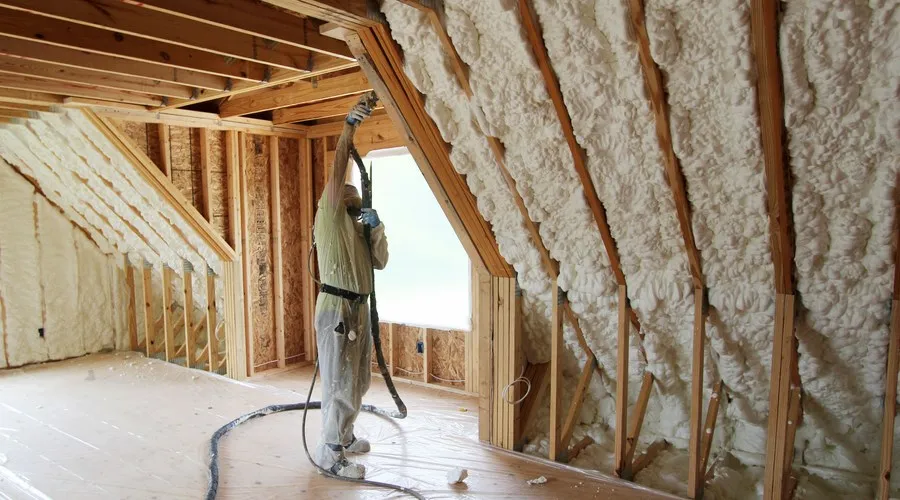Spray foam insulation reduces monthly heating and cooling expenses for Kirkland, WA properties by forming an air-tight barrier that minimizes energy loss. Homes and businesses benefit immediately from lower utility bills and long-term savings due to improved building envelope performance and HVAC system efficiency.
Spray foam offer effective solutions for Kirkland's cool, damp winters and mild summers. Based on extensive installation experience and regional performance data, this article explains how spray foam contributes to measurable cost reductions, what technical specifications matter most, and how to evaluate the right choice for residential or commercial properties.
Why Spray Foam Cuts Costs in Kirkland's Climate
Spray foam insulation works by sealing gaps where air and moisture typically enter or escape. In Kirkland, buildings are constantly exposed to coastal humidity, seasonal rainfall, and temperature fluctuations that demand reliable insulation.
Key reasons spray foam reduces energy costs:
- Prevents conditioned air from leaking through walls, ceilings, and foundations
- Reduces load on HVAC systems, extending lifespan and lowering maintenance costs
- Minimizes moisture intrusion, decreasing risk of mold-related damage
- Improves indoor comfort without requiring oversized mechanical systems
Practical Cost Benefits by Building Type
|
Building Type |
Average Energy Bill Savings |
Common Installation Areas |
ROI Timeline (Est.) |
|
Residential Homes |
20% – 35% |
Attics, walls, crawl spaces |
3–5 years |
|
Commercial Offices |
25% – 40% |
Roof decks, exterior walls |
2–4 years |
|
Retail Spaces |
20% – 30% |
Roofs, storefront walls |
2–3 years |
|
Industrial Units |
30% – 50% |
Metal panels, ceilings, floors |
2–3 years |
Source: U.S. Department of Energy (2023), PNNL Report on Building Energy Efficiency, WA-specific estimates.
Open-Cell vs. Closed-Cell Spray Foam for Kirkland Applications
Spray foam comes in two primary forms. Choosing the correct type depends on moisture exposure, structural needs, and long-term performance goals.
Technical Comparison
|
Feature |
Open-Cell Foam |
Closed-Cell Foam |
|
R-Value (per inch) |
~3.6 |
~6.5 |
|
Moisture Barrier |
No |
Yes |
|
Air Sealing Capability |
Excellent |
Excellent |
|
Structural Reinforcement |
Low |
High |
|
Best Use Areas |
Interior walls, sound control |
Roofs, exteriors, crawl spaces |
|
Cost Per Board Foot (avg) |
Lower |
Higher |
|
Vapor Retarder |
No |
Yes |
Bonus Tip: Use closed-cell foam below-grade or in areas exposed to moisture; open-cell works best in dry, interior cavities where sound control is important
Market Data on Energy Cost Impact in Kirkland
Local utility rates influence the financial impact of insulation upgrades. Puget Sound Energy (PSE) reports the average Kirkland household spends $110–$150/month on electric heating during peak seasons. Spray foam insulation reduces heat transfer by over 85%, leading to measurable savings in year one.
Reported Energy Use Decrease After Installation:
- Residential attic retrofits: 28% reduction (PSE Residential Pilot Study, 2022)
- Commercial roof retrofits: 33% reduction (WA Clean Buildings Pilot, 2023)
- Crawl space sealing with closed-cell foam: 18% reduction (Seattle Energy Lab, 2023)
Technical Specs That Influence Cost Savings
|
Attribute |
Importance to Energy Performance |
Measurable Benefit |
|
R-Value |
Determines resistance to heat flow |
Higher R-values mean better savings |
|
Perm Rating |
Indicates vapor permeability |
Closed-cell has low perm ratings |
|
Air Infiltration Rating |
Measures air leakage |
Lower rating = better envelope |
|
Dimensional Stability |
Prevents sagging over time |
Maintains thermal performance |
|
Compressive Strength |
Adds structural support in framing |
Especially relevant for roof decks |
Bonus Tip: Confirm third-party product testing data before selecting insulation to avoid performance issues in Kirkland's humid conditions.
Things to Consider Before Making a Decision
Before choosing spray foam insulation, evaluate these critical factors:
- Building Age: Older homes may require additional prep such as removal of outdated materials or sealing air gaps before application.
- Moisture Conditions: Crawl spaces and basements in Kirkland frequently have high humidity—closed-cell foam is the better choice here.
- Ventilation Needs: Spray foam creates a tight seal. Mechanical ventilation may be needed to maintain indoor air quality.
- Budget vs. ROI: Upfront cost of spray foam is higher than fiberglass or cellulose, but returns are faster due to lower energy use.
- Contractor Experience: Proper installation is essential. Improperly applied foam can lead to off-gassing, gaps, or performance failure.
Common Questions About Spray Foam Cost Savings
Does spray foam insulation qualify for energy rebates in Kirkland?
Yes. Puget Sound Energy offers limited rebates for insulation upgrades. Additional incentives may be available through Washington's Clean Energy Fund.
How does spray foam compare to fiberglass in terms of cost and performance?
Spray foam costs more initially but performs significantly better in air sealing, moisture resistance, and thermal retention, leading to greater long-term savings.
Can spray foam be used in historic homes in Kirkland?
Yes, but careful planning is needed. Open-cell foam is often preferred to allow wood framing to breathe. Consultation with local inspectors is recommended.
How long does spray foam last?
Properly installed spray foam can last 30–50 years without degradation, making it a long-term investment in building efficiency.
Services Supporting Energy Efficiency and Insulation Performance
Residential Insulation
Tailored spray foam solutions for attics, walls, floors, and crawl spaces in existing or new homes.
Commercial Insulation
Energy-saving applications for business offices, retail units, and large-scale structures.
Open-Cell Spray Foam
Best suited for interior walls and sound control needs; cost-effective and lightweight.
Closed-Cell Spray Foam
Ideal for high-moisture areas and exterior insulation; adds rigidity and water resistance.
Attic Insulation
Prevents warm air loss through the roof; critical for year-round comfort and savings.
Spray Foam Roofing
Protects against leaks and insulates simultaneously; reduces thermal cycling on roof structures.
Wall Insulation
Improves building envelope and reduces temperature swings in living and workspaces.
Exterior Insulation
Closed-cell applications for exterior-facing walls to reduce thermal bridging and water ingress.
Foundation Insulation
Seals crawl spaces and foundation walls from moisture and heat loss; enhances structural integrity.
FAQ Section
What maintenance is required for spray foam insulation?
Minimal. Once installed, spray foam typically requires no maintenance unless physically damaged.
Can spray foam be applied in cold weather?
Yes, but conditions must meet the product's minimum temperature requirements. Winter installations may need heated enclosures or surface prep.
Is spray foam safe for indoor air quality?
Yes, after curing. Professional installers use proper ventilation during application to eliminate any fumes. Post-install, it's inert and safe.
Does spray foam deter pests or insects?
It does not attract pests, but it doesn't kill or repel them either. However, it seals off entry points effectively.
Will insulation alone reduce HVAC costs significantly?
Yes. Efficient insulation reduces the workload on HVAC systems, often allowing downsizing of equipment and reducing wear over time.
Ready to Achieve Long-Term Energy Savings?
Apply these insights now: Schedule your energy assessment or insulation upgrade with Cascadia Spray Foam of Seattle. Improve energy performance, lower operating costs, and protect your property's value year-round.
Contact: Cascadia Spray Foam of Seattle
Phone: (425) 386-3500
Email: info@cascadiasprayfoam.com
Reviewer: Olivia Thompson has spent 10 years working in spray foam insulation, helping companies grow their visibility. She reviewed this article and provided valuable suggestions on how to better align the content with the needs and expectations of customers, ensuring it resonates with the target audience.








